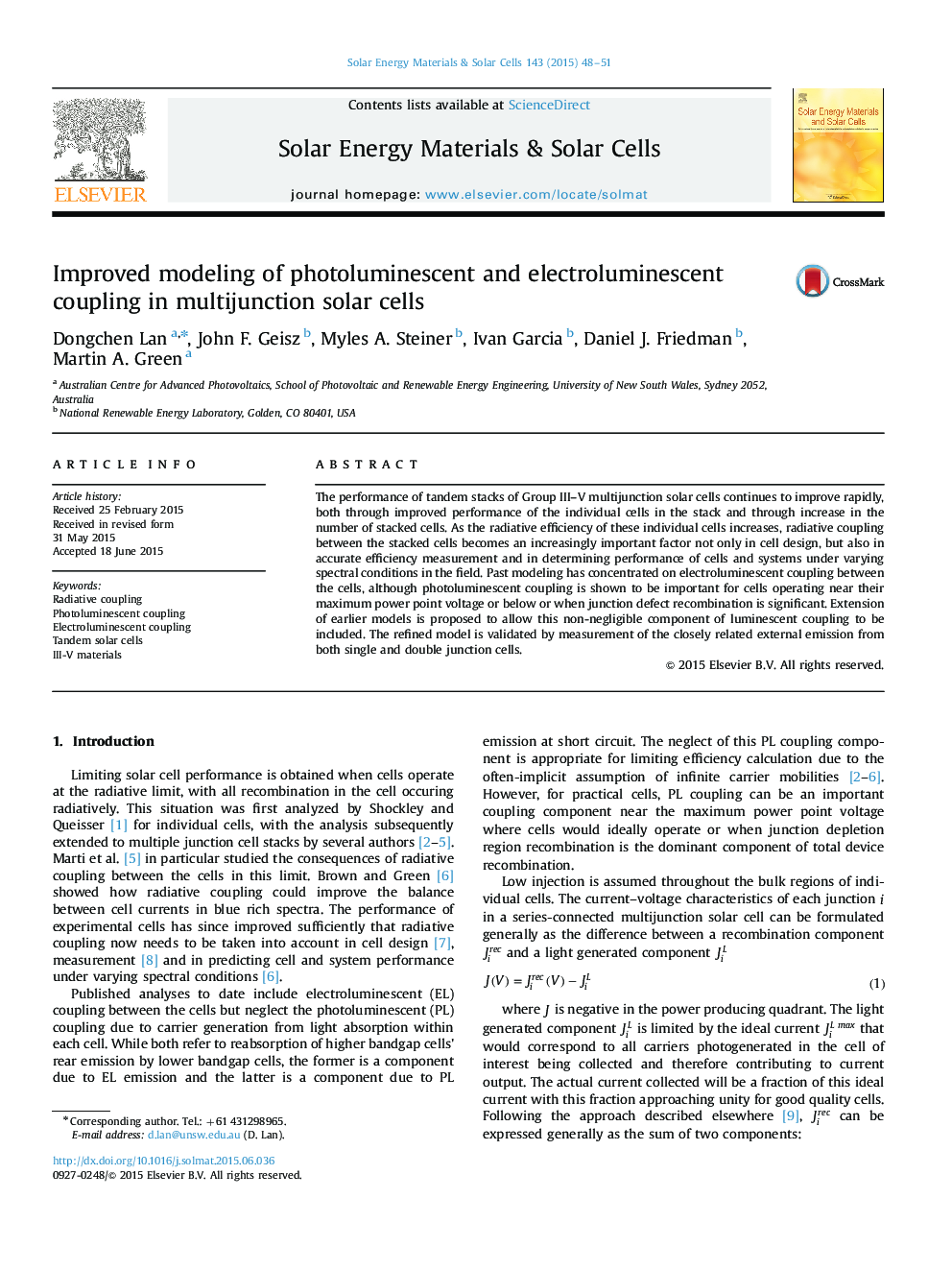| Article ID | Journal | Published Year | Pages | File Type |
|---|---|---|---|---|
| 6535012 | Solar Energy Materials and Solar Cells | 2015 | 4 Pages |
Abstract
The performance of tandem stacks of Group III-V multijunction solar cells continues to improve rapidly, both through improved performance of the individual cells in the stack and through increase in the number of stacked cells. As the radiative efficiency of these individual cells increases, radiative coupling between the stacked cells becomes an increasingly important factor not only in cell design, but also in accurate efficiency measurement and in determining performance of cells and systems under varying spectral conditions in the field. Past modeling has concentrated on electroluminescent coupling between the cells, although photoluminescent coupling is shown to be important for cells operating near their maximum power point voltage or below or when junction defect recombination is significant. Extension of earlier models is proposed to allow this non-negligible component of luminescent coupling to be included. The refined model is validated by measurement of the closely related external emission from both single and double junction cells.
Keywords
Related Topics
Physical Sciences and Engineering
Chemical Engineering
Catalysis
Authors
Dongchen Lan, John F. Geisz, Myles A. Steiner, Ivan Garcia, Daniel J. Friedman, Martin A. Green,
